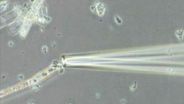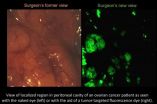(Press-News.org) SALT LAKE CITY – New research from the University of Utah in collaboration with the Utah Department of Health (UDOH) shows that the presence or absence of intellectual disability (ID) and autism spectrum disorders (ASD) varies with risk factors such as gender, parental age, maternal ethnicity, and maternal level of education. The study, published Sept. 15, 2011, in Autism Research, also shows that household income level has no association with either ID or ASD, in contrast to what other studies have suggested.
ASDs are a group of childhood neurodevelopmental disorders characterized by problems with social interaction, communication, and restricted and unusual behaviors. ASDs vary widely in severity and may be accompanied with or without intellectual disability. Amid a significant increase in the reported prevalence of ASDs, the Centers for Disease Control and Prevention (CDC) has recognized autism as an urgent public health concern and stressed the importance of characterizing risk factors.
"ASDs represent a diverse group of conditions that may have different causes, and children with ASDs, either with or without ID, represent opposite ends of the autism spectrum," says Judith Pinborough-Zimmerman, Ph.D., research assistant professor in the Department of Psychiatry at the University of Utah, and first author on the study. "By identifying risk factors associated with ASDs, we may be able to gain a better understanding of the underlying causes of autism."
Pinborough-Zimmerman and her colleagues identified children with ASD and/or ID in a three-county area surrounding Salt Lake City through the Utah Registry of Autism and Developmental Disabilities (URADD), a multiple-source, population-based surveillance program. They evaluated a variety of demographic factors and found that children with ASD but not ID were significantly more likely to be male and to have mothers of white, non-Hispanic ethnicity. Children with both ASD and ID were also more likely to be male, but were more likely to have mothers older than 34 years of age. Children who had ID but not ASD were significantly more likely to have fathers older than 34 years of age and significantly less likely to have mothers with more than 13 years of education.
"Demographic risk factors, such as male gender and parental age have been well-described," says Pinborough-Zimmerman. "However, the way in which socioeconomic factors are associated with the development of ASDs is poorly understood."
To investigate the link between socioeconomic factors and autism, Pinborough-Zimmerman and her colleagues examined how various measures of income changed over an eight-year period in families with a child with ASD and/or ID, as compared with the general population. The researchers were surprised to find no clear association between markers of income and the risk for ASD and/or ID, as previous studies have shown ASD to be associated with indicators of higher income and ID to be associated with indicators of low income.
"This study, despite the small sample size, is an example of the importance of exploring the many variables, that in combination, may result in an increase risk of developing ASD," says Dr Harper Randall, Medical Director for the Division of Family Health and Preparedness, UDOH.
According to Pinborough-Zimmerman, the strength of this study lies in its broad ascertainment methods, which utilized multiple educational and health source records to include a wide spectrum of ASD cases. This study was also unique in analyzing socio demographic risk factors for ASD and ID, both independently and together.
"We hope that by identifying the many possible genetic, environmental, and socioeconomic factors that may contribute to this complex group of neurodevelopment disorders, there can be improvements in diagnosis, treatment, and prevention," says Pinborough-Zimmerman.
INFORMATION: END
ST. PAUL, Minn. – In a first of its kind study, researchers have found that using two way audio-video telemedicine to deliver stroke care, also known as telestroke, appears to be cost-effective for rural hospitals that don't have an around-the-clock neurologist, or stroke expert, on staff. The research is published in the September 14, 2011, online issue of Neurology®, the medical journal of the American Academy of Neurology.
"In an era of spiraling health care costs, our findings give critical information to medical policy makers," said Jennifer J. Majersik, MD, MS, ...
Amsterdam, The Netherlands: Eating low-fat yoghurt whilst pregnant can increase the risk of your child developing asthma and allergic rhinitis (hay fever), according to recent findings.
The study will be presented at the European Respiratory Society's (ERS) Annual Congress in Amsterdam on 25 September 2011. All the abstracts for the ERS Congress will be publicly available online from today (17 September 2011).
The study aimed to assess whether fatty acids found in dairy products could protect against the development of allergic diseases in children.
The researchers ...
The crystal structure of the dynamin protein — one of the molecular machines that makes cells work — has been revealed, bringing insights into a class of molecules with a wide influence on health and disease.
"It's a really cool structure," said Jodi Nunnari, professor and chair of molecular and cellular biology at UC Davis and senior author of the paper, to be published Sept. 18 in the journal Nature. "This is a really important class of molecules for regulating membrane dynamics."
The detailed structure reveals exactly how the dynamin protein can form large assemblies ...
SAN DIEGO, CA and PHILADELPHIA, PA – September 18, 2011 —Tarsa Therapeutics today presented positive safety and efficacy data from its Phase III ORACAL trial of OSTORA™, the company's oral recombinant salmon calcitonin tablet in development for the treatment of postmenopausal osteoporosis. These data were presented at the American Society for Bone and Mineral Research 2011 Annual Meeting by ORACAL investigator Neil Binkley, MD, who is an Associate Professor of Endocrinology and Geriatrics at the University of Wisconsin School of Medicine and Public Health in Madison, ...
VIDEO:
Receptors on the cell's surface crowd around the nanotube, effectively standing it upright. The cell mistakes the tube for a sphere and begins to engulf it.
Click here for more information.
PROVIDENCE, R.I. [Brown University] — It's been long known that asbestos spells trouble for human cells. Scientists have seen cells stabbed with spiky, long asbestos fibers, and the image is gory: Part of the fiber is protruding from the cell, like a quivering arrow that's found ...
Researchers have developed a new method to sequence and analyze the dark matter of life—the genomes of thousands of bacteria species previously beyond scientists' reach, from microorganisms that produce antibiotics and biofuels to microbes living in the human body.
Scientists from UC San Diego, the J. Craig Venter Institute and Illumina Inc., published their findings in the Sept. 18 online issue of the journal Nature Biotechnology. The breakthrough will enable researchers to assemble virtually complete genomes from DNA extracted from a single bacterial cell. By contrast, ...
BOULDER -- The planet's deep oceans at times may absorb enough heat to flatten the rate of global warming for periods of as long as a decade even in the midst of longer-term warming, according to a new analysis led by the National Center for Atmospheric Research (NCAR).
The study, based on computer simulations of global climate, points to ocean layers deeper than 1,000 feet (300 meters) as the main location of the "missing heat" during periods such as the past decade when global air temperatures showed little trend. The findings also suggest that several more intervals ...
WEST LAFAYETTE, Ind. - The first fluorescence-guided surgery on an ovarian cancer patient was performed using a cancer cell "homing device" and imaging agent created by a Purdue University researcher.
The surgery was one of 10 performed as part of the first phase of a clinical trial to evaluate a new technology to aid surgeons in the removal of malignant tissue from ovarian cancer patients. The method illuminates cancer cells to help surgeons identify and remove smaller tumors that could otherwise be missed.
Philip Low, the Ralph C. Corely Distinguished Professor of ...
Scientists at the University of Plymouth have shown, for the first time in an animal, that nanoparticles have a detrimental effect on the brain and other parts of the central nervous system.
They subjected rainbow trout to titanium oxide nanoparticles which are widely used as a whitening agent in many products including paints, some personal care products, and with applications being considered for the food industry. They found that the particles caused vacuoles (holes) to form in parts of the brain and for nerve cells in the brain to die. Although some effects of nanoparticles ...
Production of crop milk, a secretion from the crops of parent birds, is rare among birds and, apart from pigeons, is only found in flamingos and male emperor penguins. Essential for the growth and development of the young pigeon squab, pigeon 'milk' is produced by both parents from fluid-filled cells lining the crop that are rich in fat and protein. Research published in BioMed Central's open access journal BMC Genomics uses new technology to study the genes and proteins involved in pigeon 'milk' production and shows that pigeon 'milk' contains antioxidants and immune-enhancing ...



